Old-School Beef Shank Stew – Made Easy in the Slow Cooker
This old-school slow-cooker beef shank stew is proof that simple ingredients can still bring big, cozy flavor. No fancy steps—just a slow, steady cook that turns a humble, tough-as-nails cut into something deeply comforting and fall-apart tender.
It’s the kind of magic grandma pulled off with a wooden spoon and a stubborn cut of meat.
All you’ll need is a nice thick piece of buttered crusty bread for dippin’!
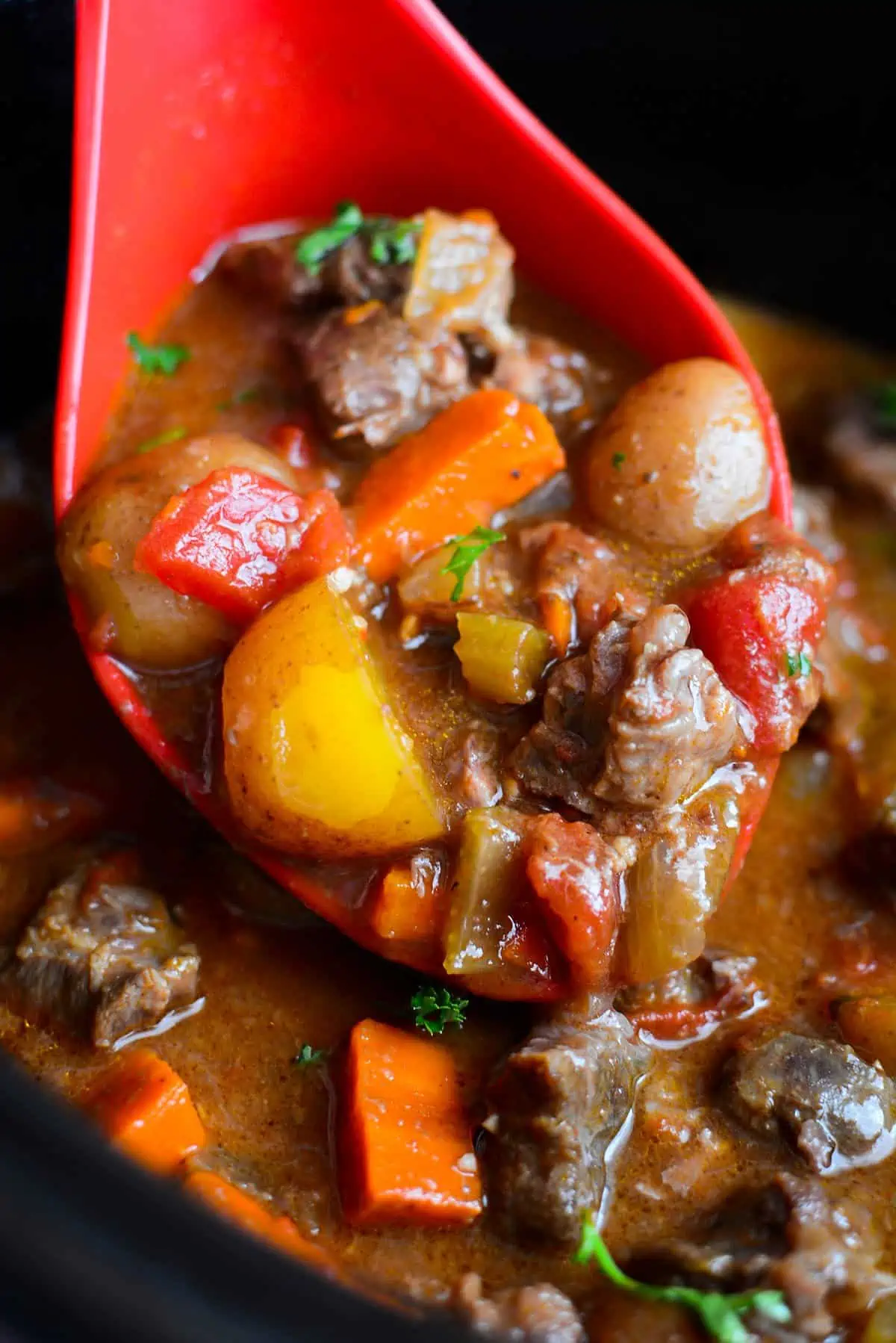
Tender Beef Shank Stew Recipe
The super rich, beefy flavor in good stews is all due to tough cuts like beef shank. It’s tough and sinewy, and if you don’t cook it right, you’ll take a bite and chew till next Tuesday. Shank comes from a hard-working part of the cow, so the more it’s worked, the tougher but more flavorful it gets.
Weirdly enough.
But toss it in the crockpot, let it do its low and slow thing, and boom – you’ve got tender, rich, and insanely flavorful stew.
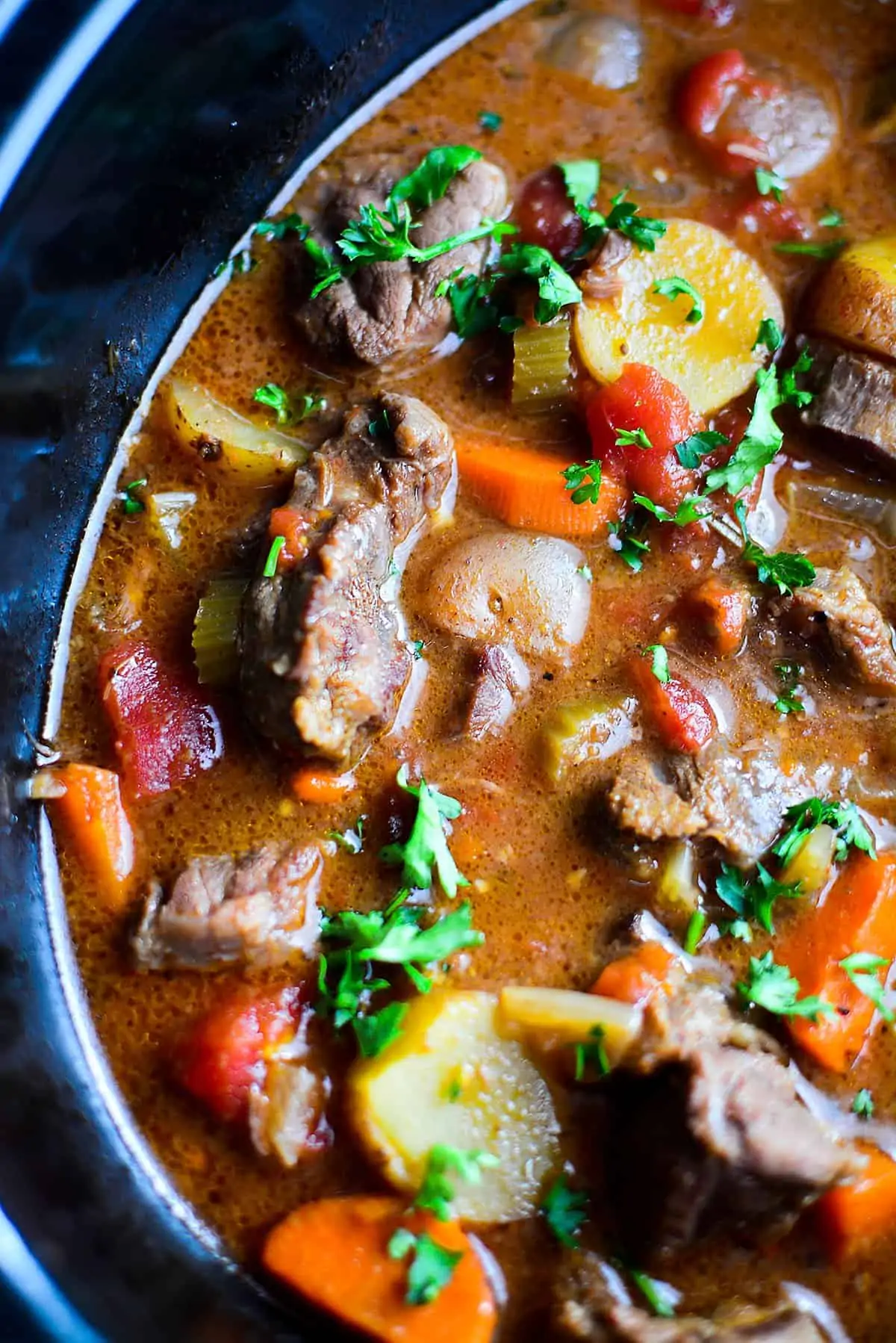
🌟Ingredient Highlights
- Beef shanks – Look for lots of marrow and connective tissue—that’s where the flavor magic lives.
- Onion – Yellow or white. Don’t stress—just chop it up.
- Carrots – Classic stew veg. Cut into hearty chunks so they don’t vanish after hours of cooking.
- Celery – Adds background flavor and a bit of texture.
- Garlic – Fresh is best. Smash or mince—it all melts in anyway.
- Tomatoes – I love stewed fire roasted tomatoes, but use tomato paste if you want. Tomatoes add rich umami depth. Don’t skip it!
- Beef broth – Low-sodium gives you more control over the final salt level.
- Worcestershire sauce – The secret weapon for savory depth.
- Bay leaf & thyme – Dried is fine. They bring cozy, classic stew flavor.
- Salt & pepper – Season to taste, especially at the end.
Look below for the printable recipe card for the exact ingredients and directions for this easy beef shank stew.
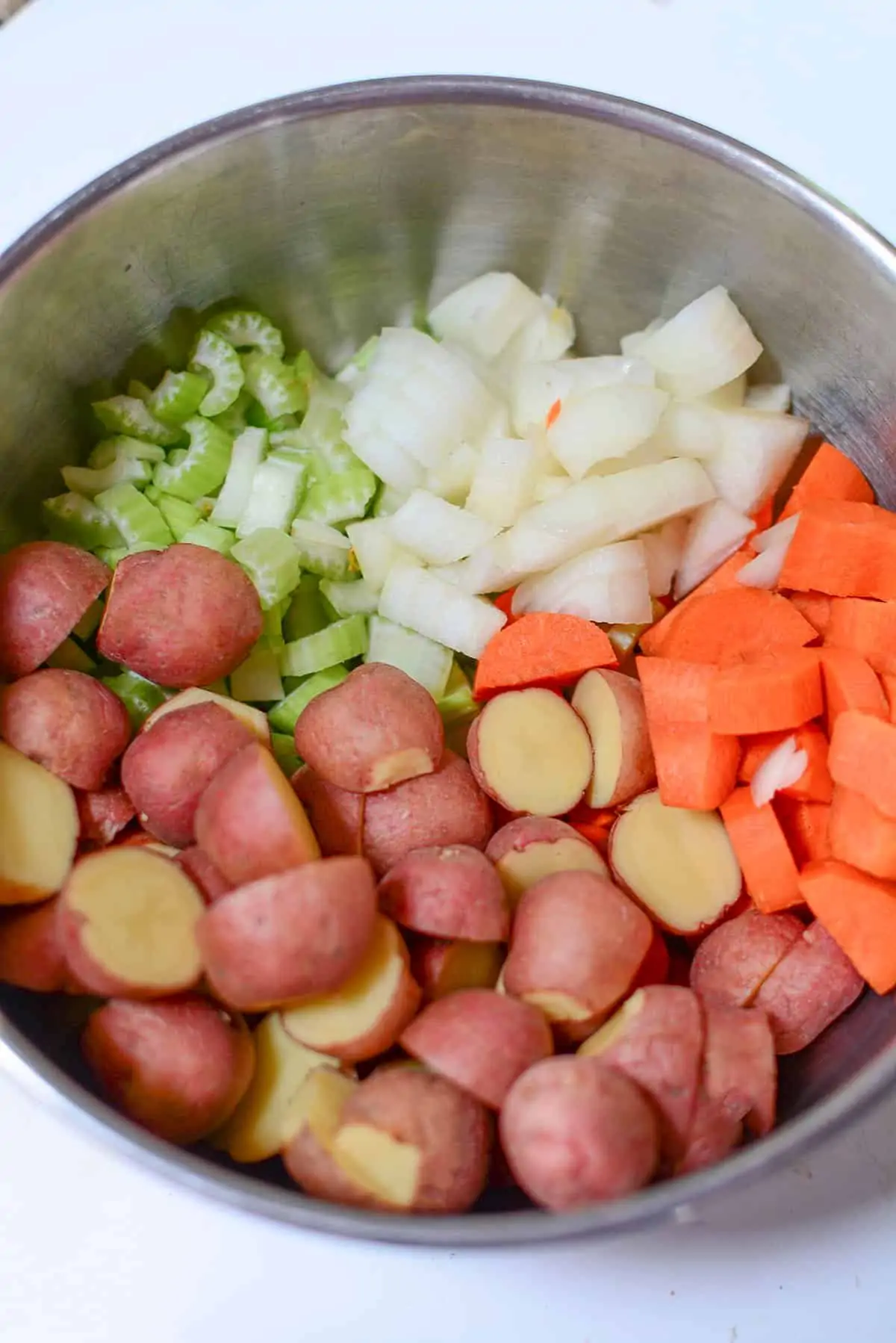
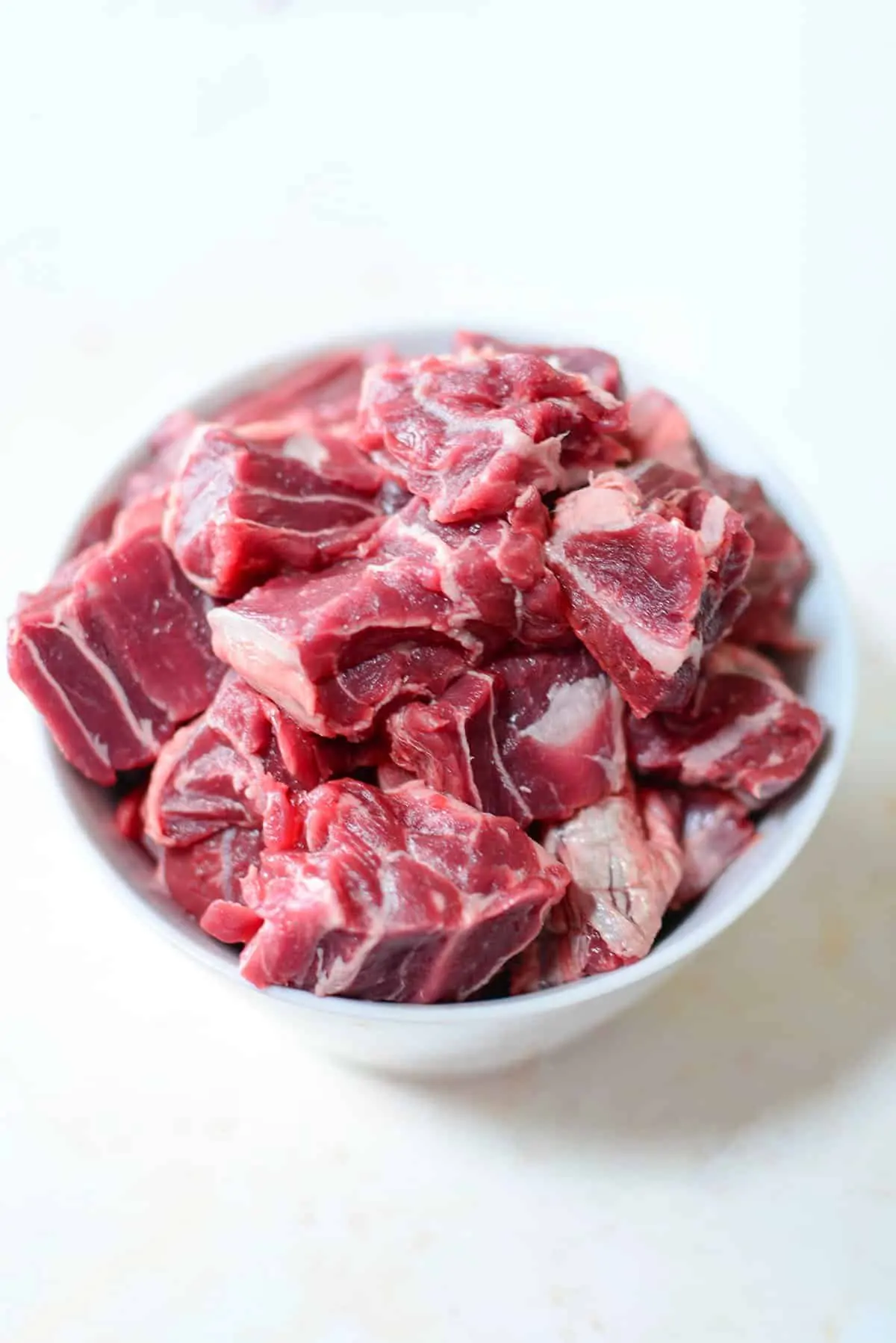
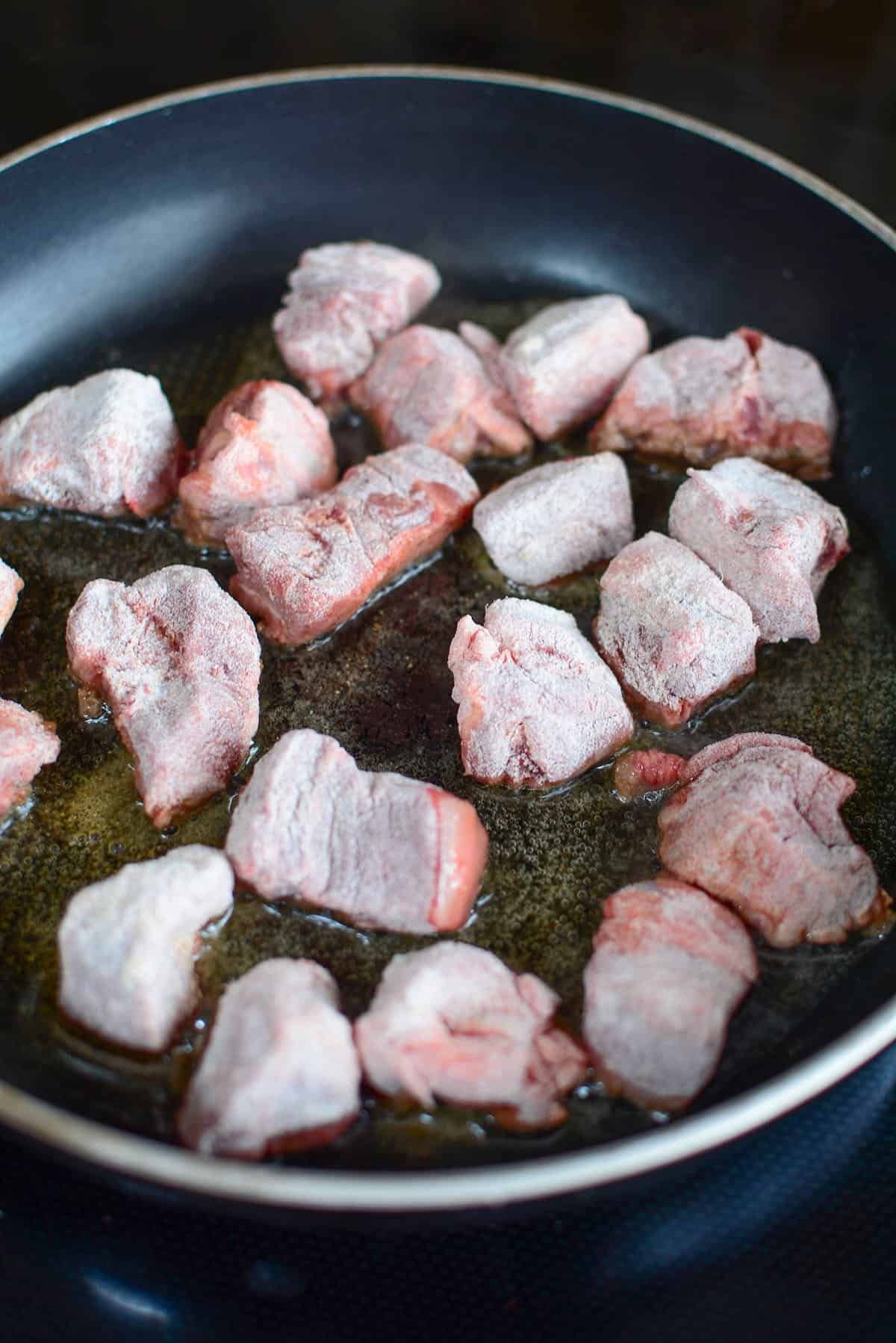
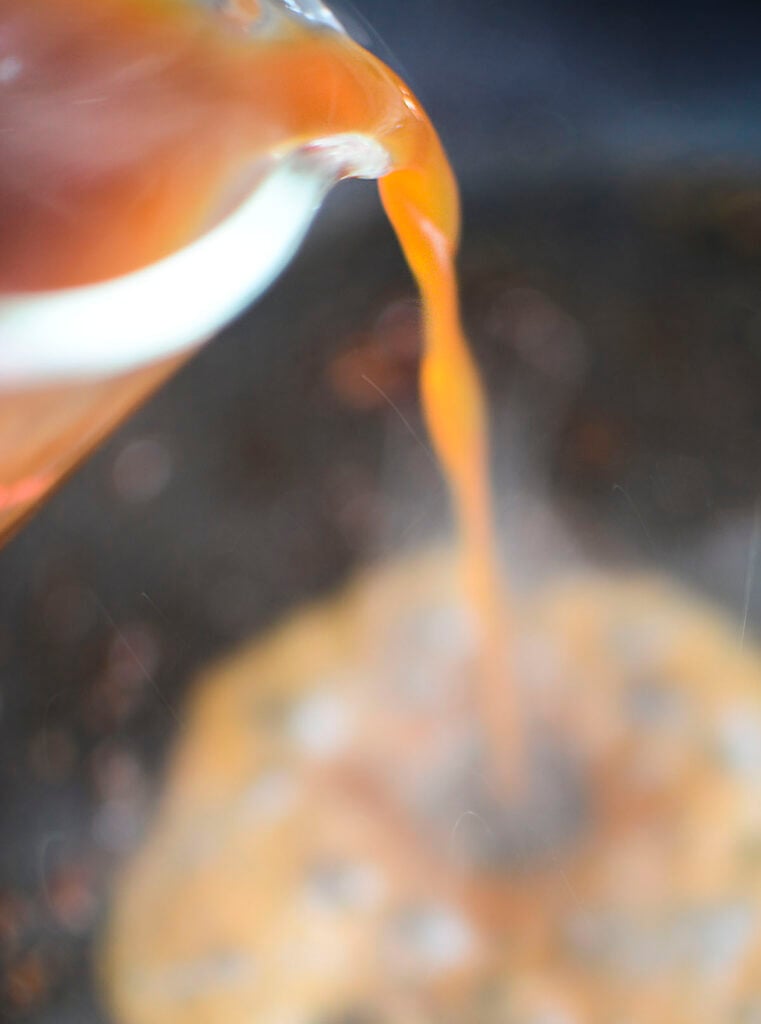
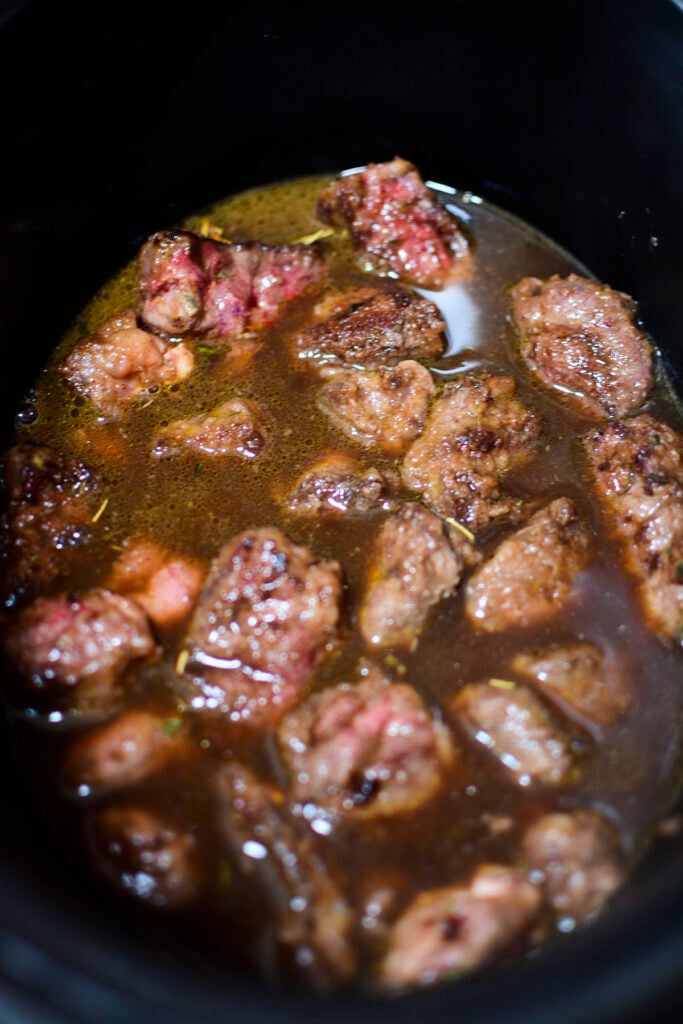
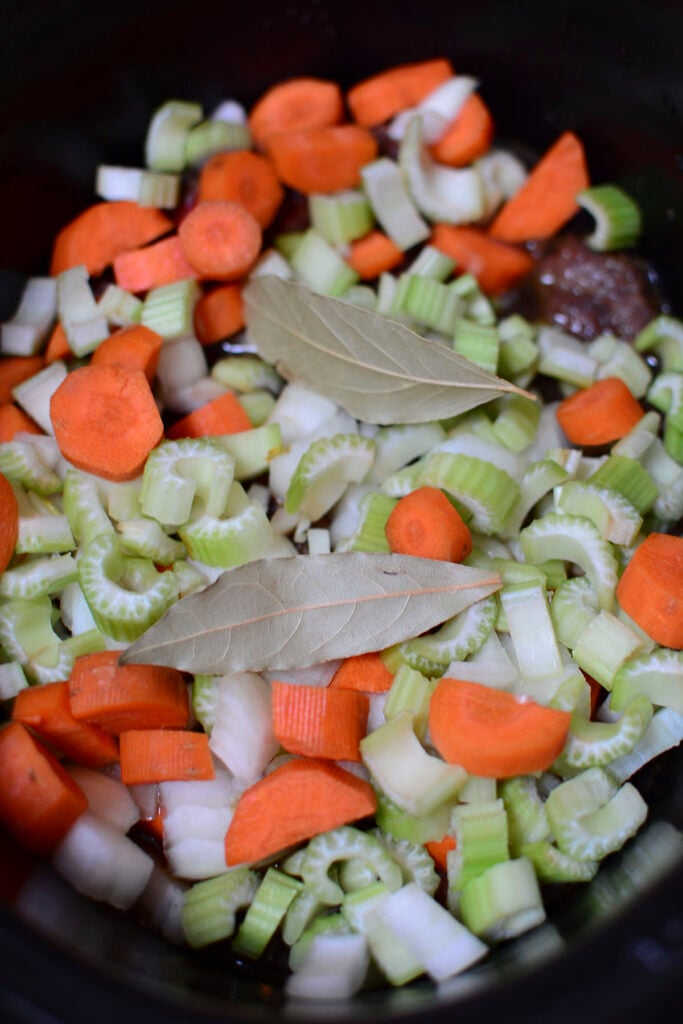
Important Tips That Make A Difference In Flavor
- Sear the meat – I know that dredging the meat in flour and searing it in a pan is an extra step but you will be totally rewarded if you do this step. Not only does the flour help to thicken the stew as it cooks, but the searing of the beef adds a depth of flavor that you just don’t get if you put the meat in raw.
- The FOND – The fond is the brown bits that form at the bottom of a skillet when you fry something. This is INSANELY RICH in flavor and you don’t want to miss out on adding that to your stew. The beef broth is poured into the skillet to lift the fond off the pan, and then transferred to the slow cooker for added flavor!
- Add the potatoes later – The potatoes are the only thing that I added halfway through the slow-cooking process. The carrots and everything else can withstand longer cooking times, but these potatoes would be overcooked and crumbly if you added them at the same time as everything else. Unless your potatoes are in huge chunks, wait to add them later on in the cooking process.
- Don’t lift the lid very often – Crockpots take a while to get back up to temperature so the more often you lift the lid, the more cooking time will go to bringing the pot back up to cooking temp. Lift it once to add the potatoes, give it a stir, and put the lid back on quickly to finish cooking.
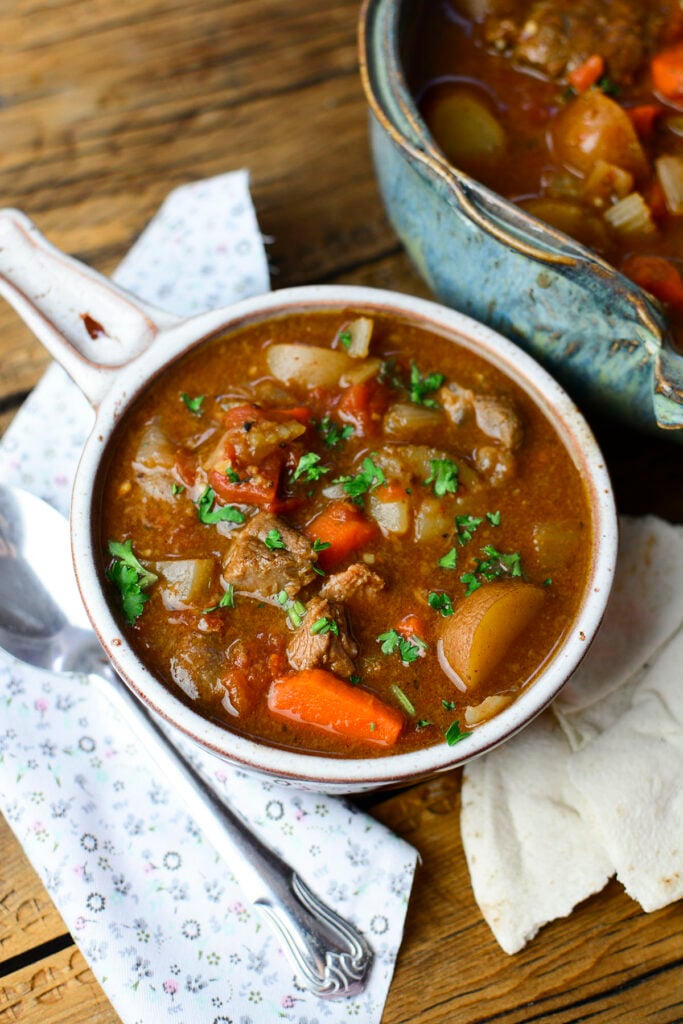
Serving
Serving: Serve the stew with soft crusty baked bread (like my No-Knead Country Bread or my super easy-to-make Cheddar Dill Bread) that’s buttered.
Buttered bread is IDEAL for dunking into that rich, savory cooking that’s pure flavor. (It’s one of the best parts of eating this stew, in my opinion.)
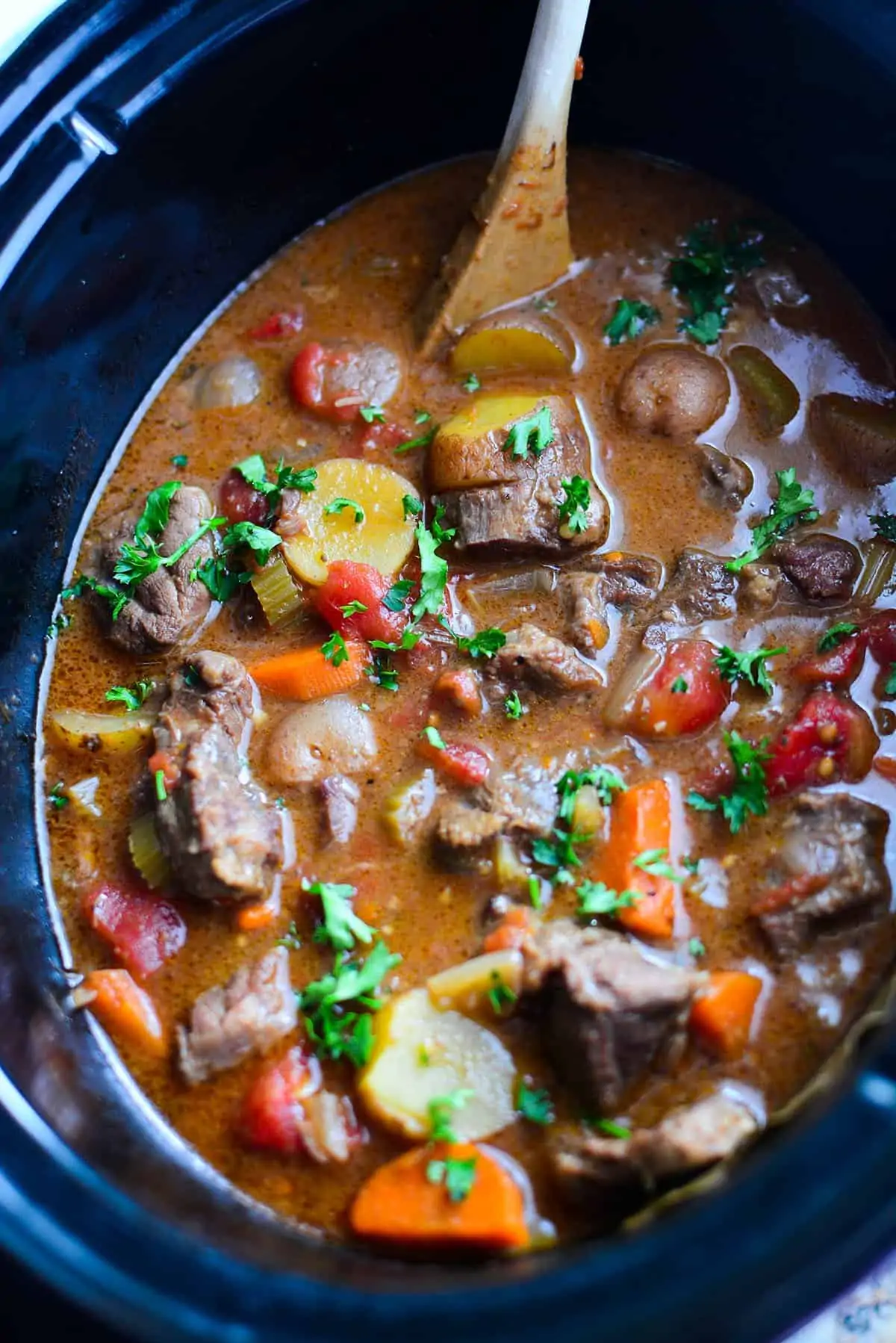
Recipe FAQs
Sure. Pressure cooking will definitely quicken the cooking process. You can follow my directions for my Instant Pot Beef Stew, but use the ingredients from this post.
Absolutely! If you want to add red wine, add your favorite, and do so at the beginning of the cooking process when you’re adding the beef broth. Don’t wait till the end to add more wine as the alcohol won’t have time to cook off and you’ll taste that in the stew.
Believe it or not, oxtail is amazing for this dish. Again, it’s tough as nails but when slow-cooked (or pressure-cooked) it’s absolutely tender and unctuous. You can also use cut-up chuck roast, or brisket would be a good choice as well.
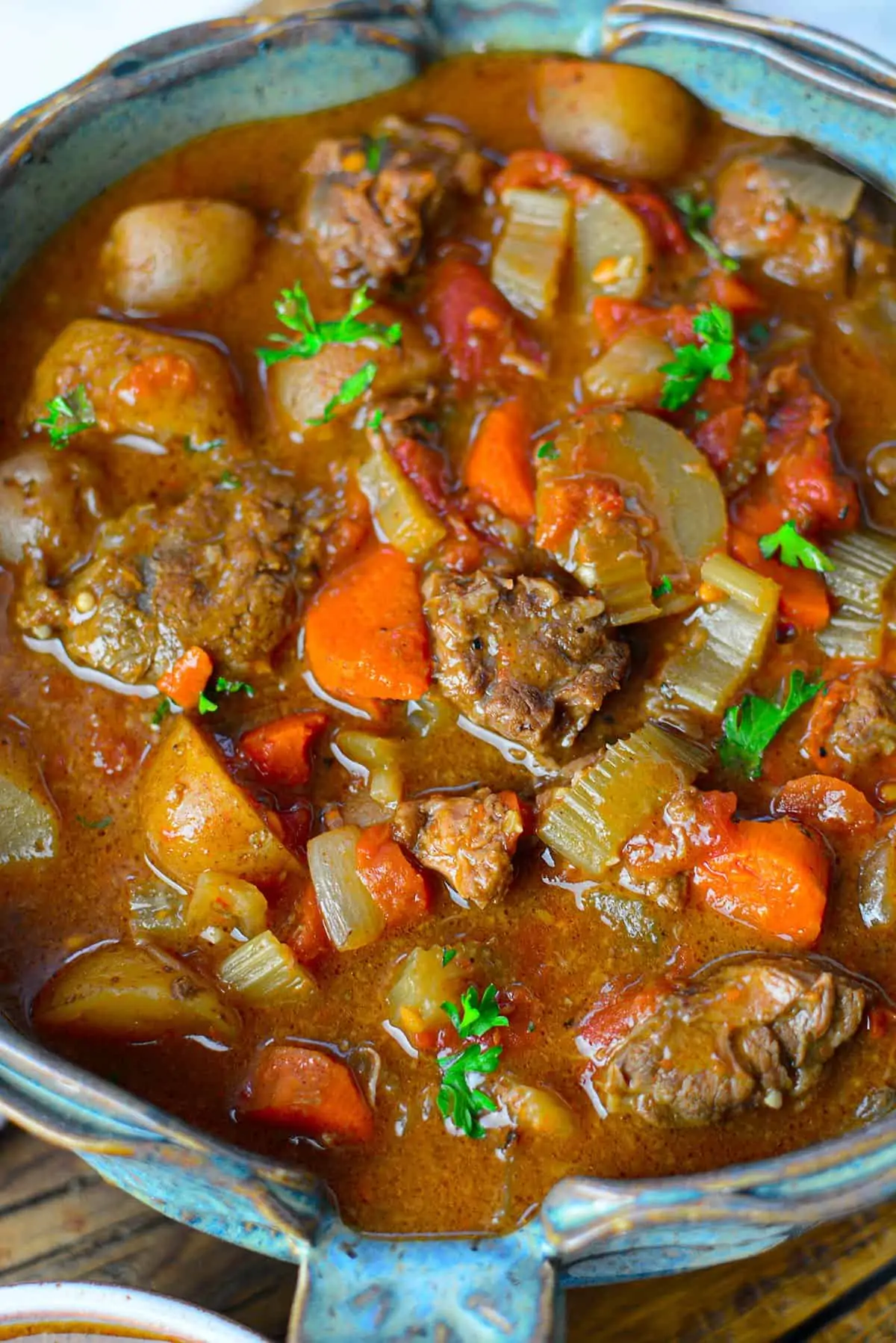
Well my loves, I hope I’ve convinced you to try this Beef Shank recipe. It’s definitely one of my favorite stews simply because of the incredible flavor that the tough beef shanks lend to the whole dish.
If you’ve tried this recipe, please consider giving it a Star Rating on the recipe card and leave a comment, letting me know how you liked it! Thanks for stopping by The Salty Pot and I hope you have a fantastic day!
~Joanne
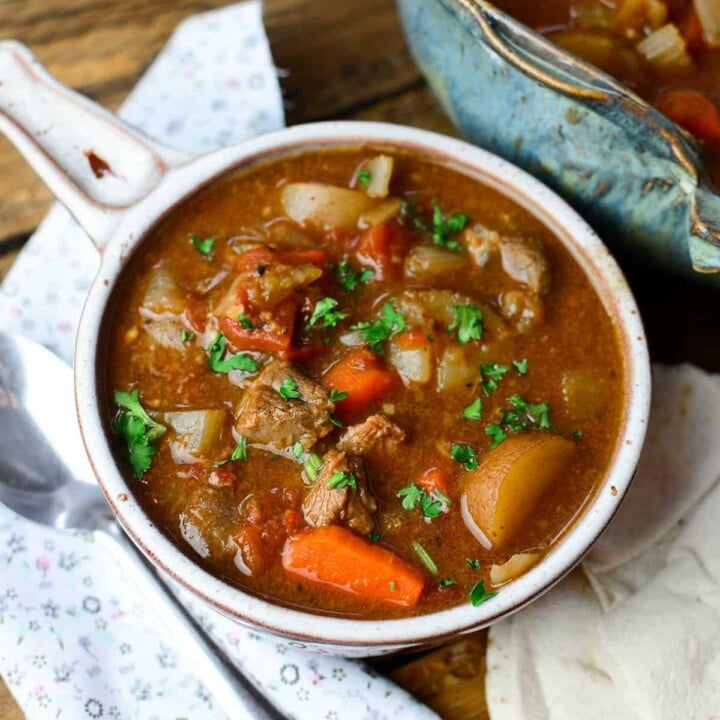
Slow Cooker Beef Shank Stew
Tender, fall-apart chunks of beef with perfectly cooked potatoes, carrots, and onions to flavor the stew is exactly what you'll get with this stew. Hearty, rich, and beefy because of the beef shanks, this recipe takes a while in the slow cooker, but it's worth the wait!
Ingredients
- 1.5 lbs beef shanks cut into bite size pieces
- 1 lb baby potatoes, cut in half
- 1 large carrot, peeled and sliced
- 2-3 ribs of celery, sliced
- 1 onion, medium, chopped
- 1 can fire roasted stewed tomatoes, 15 oz, undrained
- 3 cups beef broth
- 2 bay leaves
- 2 tsp worchestershire sauce
- 2 tsp garlic powder
- 1 tsp onion powder
- 1 tsp rosemary, dried
- 1 tsp thyme
- 1 tsp smoked paprika
- as desired, seasoning salt and pepper
- 1/4 cup flour
- Oil for frying
Instructions
- Gather all the spices together and put them into a plastic bag or container. Add the flour and mix well.
- Dredge the meat in the flour mixture and add to a heated and oiled skillet.
- Sear all sides of the pieces of meat and remove them after they've got some color. (2-3 minutes). Transfer the beef to the slow cooker.
- Add about 1 cup of beef broth to the skillet to lift the fond. Stir, and then add the liquid to the slow cooker.
- Add the remaining seasoning mix that you dredged the beef shanks in.
- Add the rest of the vegetables, tomatoes, bay leaves, and Worcestershire sauce. (Don't add the potatoes yet.)
- Pour in the 3 cups of beef broth, ensuring it just covers the meat and vegetables for even cooking. (Add a bit extra broth if you need it)
- Cook over low heat for 4 hours. After four hours is up, add the potatoes to the stew, give it a stir, and continue cooking for another 3-4 hours.
- When the potatoes are tender, the stew is ready. Remove the bay leaves and serve with buttered bread.
Notes
Nutrition Information:
Yield: 10 Serving Size: 1 cupAmount Per Serving: Calories: 268Total Fat: 9gSaturated Fat: 3gTrans Fat: 0gUnsaturated Fat: 5gCholesterol: 64mgSodium: 499mgCarbohydrates: 17gFiber: 2gSugar: 3gProtein: 28g
All nutritional information is based on third-party calculations and is only an estimate. Each recipe and nutritional value will vary depending on the brands you use, measuring methods, and portion sizes per household.


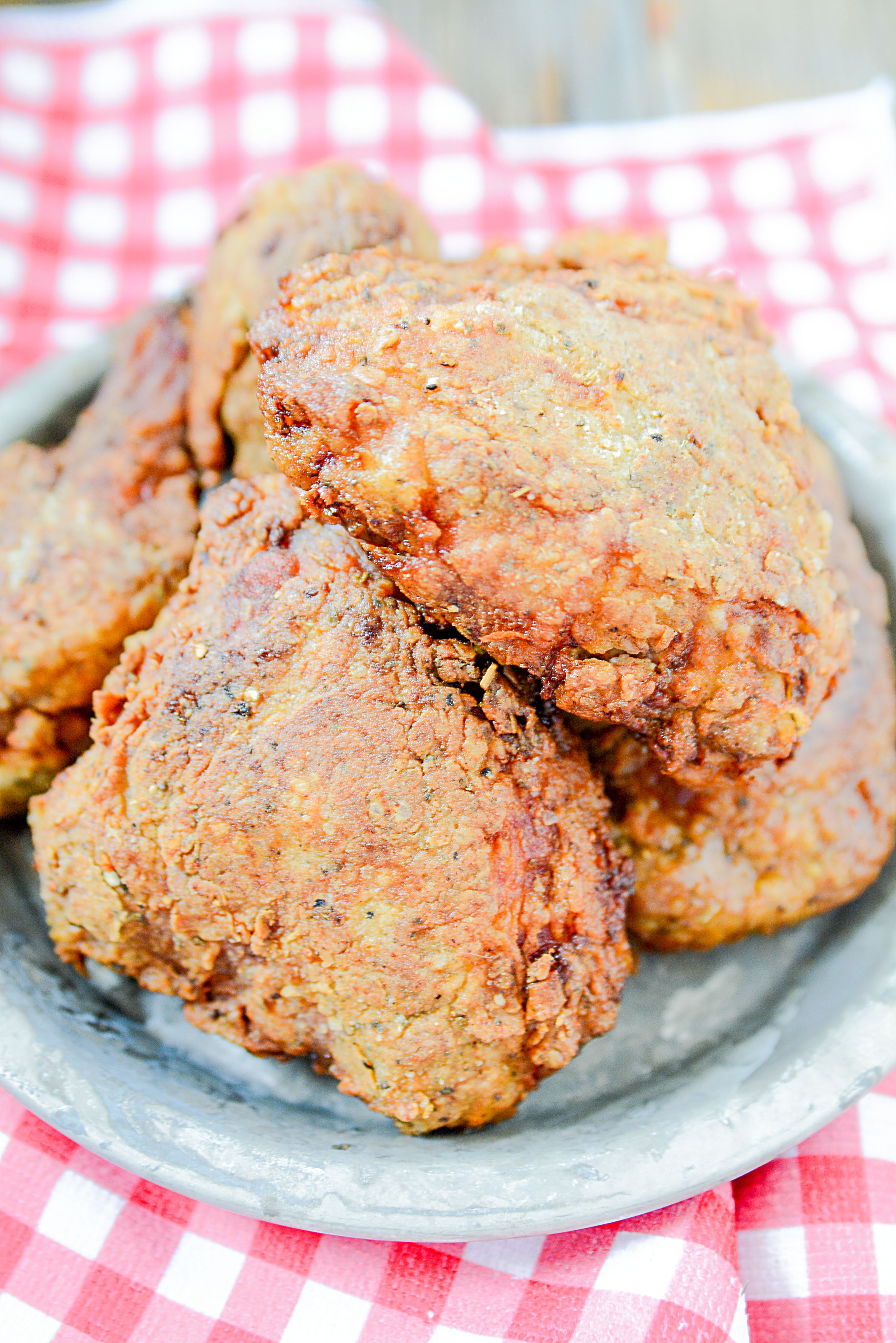

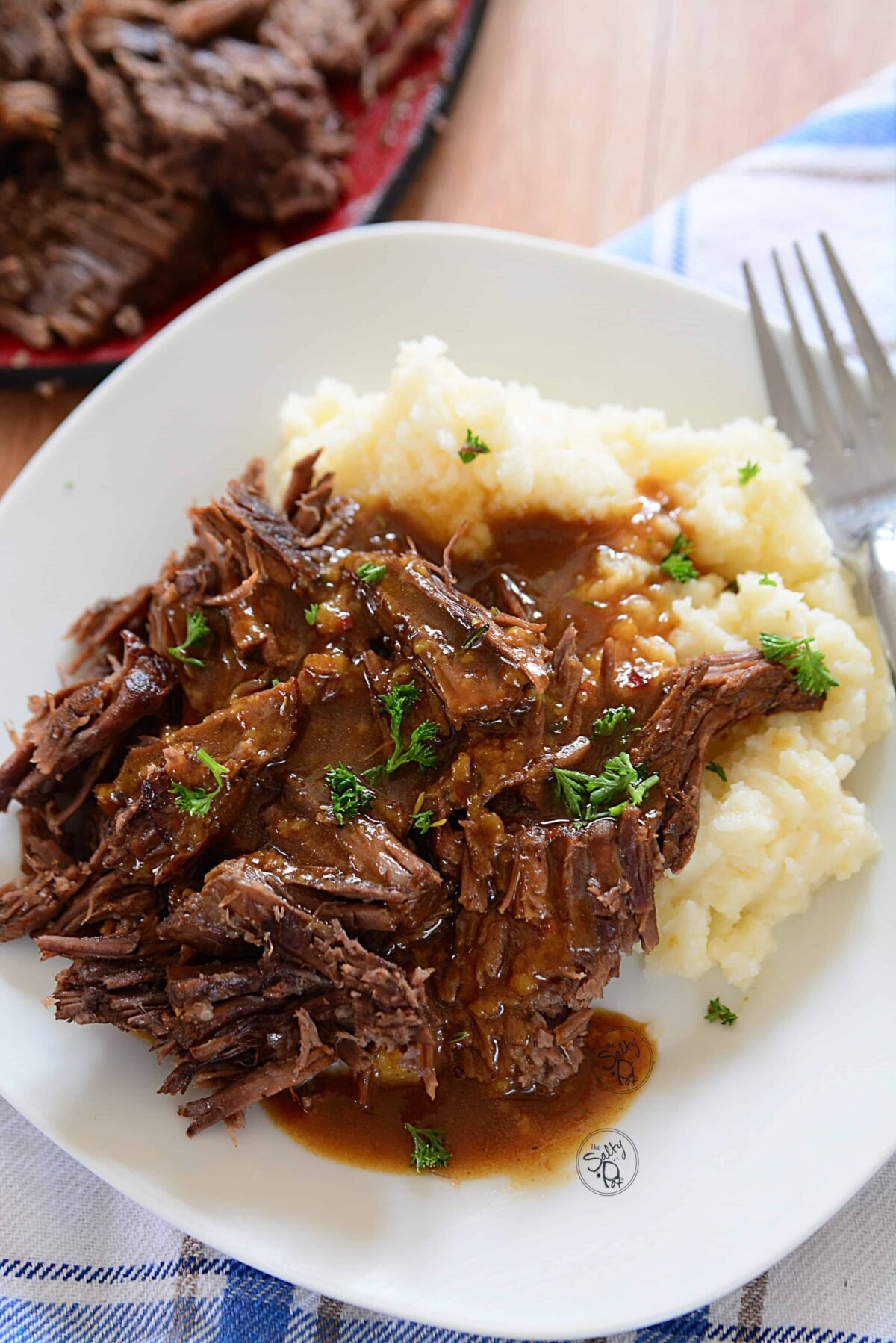

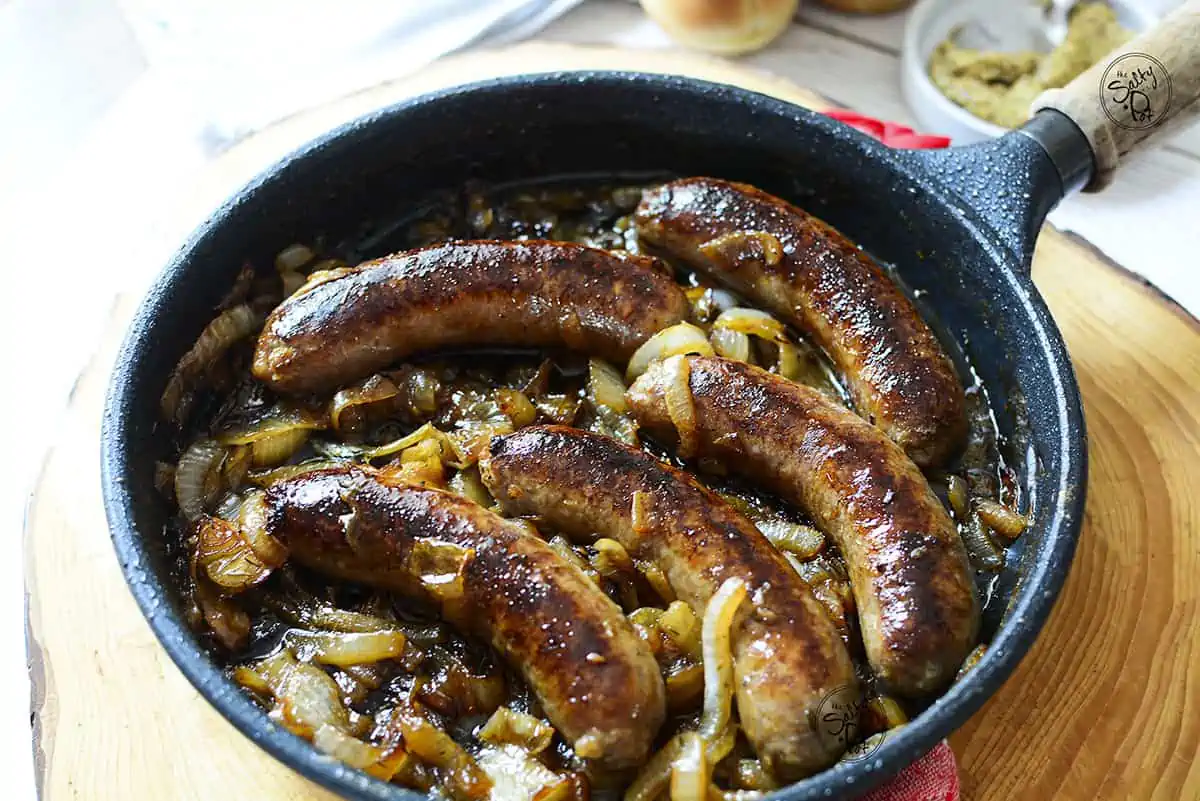
Do you think you could throw in some red wine in this recipe?
I don’t see why not!
This was my first time using beef shank. I made this exactly as written with the only exception being I did not cut the potatoes as small as the meat, and I added some soaked beans. Neither the potatoes or beans were quite done, so I think they needed an additional hour. Also, as near as I can tell the meat dissolved into the stew, which was a bit of a surprise. Not sure what to make of that because there was quite a bit of meat but virtually none in the bowl or left in the pot. But the result was very good and I will make some minor adjustments the next time I make this.
Thank you for commenting Ed! That’s bizarre that the meat dissolved into the stew. Shank is a pretty tough character so it would take quite a long while to completely break down. Regardless, I’m super happy that you gave the recipe a try and that you found it very good. When you try it again and make your adjustments, please let me know how it goes!
This recipe turned out amazing! I only had bone in beef shanks so I trimmed all of the meat off of the bone into cubes. I made a few of my own adjustments: I ended up using double the flour/seasoning mixture because of the amount of meat I had, it thickened the stew very nicely when it was done cooking. After 4 hours I added a bag of frozen mixed veggies in addition to the carrots and celery the recipe already calls for. I left out the potatoes because I made this planning to freeze for postpartum. I used bone broth for added nutrients in place of beef broth and omitted the thyme just for flavor preference. I cooked the beef bones in the slow cooker with the soup for a full 8 hours to get the added nutrients and marrow as well. The result was so hearty and delicious! Perfect and nutritious for postpartum recovery when I need it!
Hi Haley! Thank you so much for taking the time to comment on the recipe! I’m SO thrilled that you loved it and I have to say, what a brilliant idea to cook the whole mixture with the beef bones for added flavor!!
Hi! Looking forward to how this turns out. I am making it today, and noticed that your instructions don’t include when to add the Bay leaves and Worcestershire sauce. I’m guessing you add it when you add the vegetables. Just thought that I’d give you a heads up. I’m also cooking this with a bone in the shank, so we will see how it turns out. Thanks for the receipe!
Jennifer, you’re absolutely right! I’ve amended the recipe card, thank you for letting me know!
What are you timing recommendations to make this quicker?
Hi Frances – So this is a slow cooker recipe, so it is designed to take a low and slow approach. Because shank cuts are typically very tough, a long cook time is required to make it tender so I don’t recommend trying to cook it faster. The only other way is to pressure cook it, but then the timing depends on the type of pressure cooker, (stovetop, electric, etc) and the directions would be different regarding adding the vegetables and such.
Can you use whole shanks?
Hi Mike! So I’ve never used a whole shank for this recipe (with the bone, I’m assuming you’re talking about). I usually use a de-boned shank but I think you could. It’s an interesting thought because I think braising the bone would add wonderful flavor. If you try it, please let me know how it worked out for you! I’d love to add your experiences to the post (giving you credit) to help others who might wonder the same thing 🙂
I need to know the amount of Sodium in this recipe for I’m on a 1500 MG salt free diet. I have a heart condition and the more you can tell me about the nutrimentsJ S would help me a lot.
Thanks for your comment! I updated the nutritional information. Keep in mind, this information will depend on the types of products used. You can always decrease the sodium levels by using Low Sodium products in the stew but as far as a super accurate number, that’s the best I can do. I hope this helps.